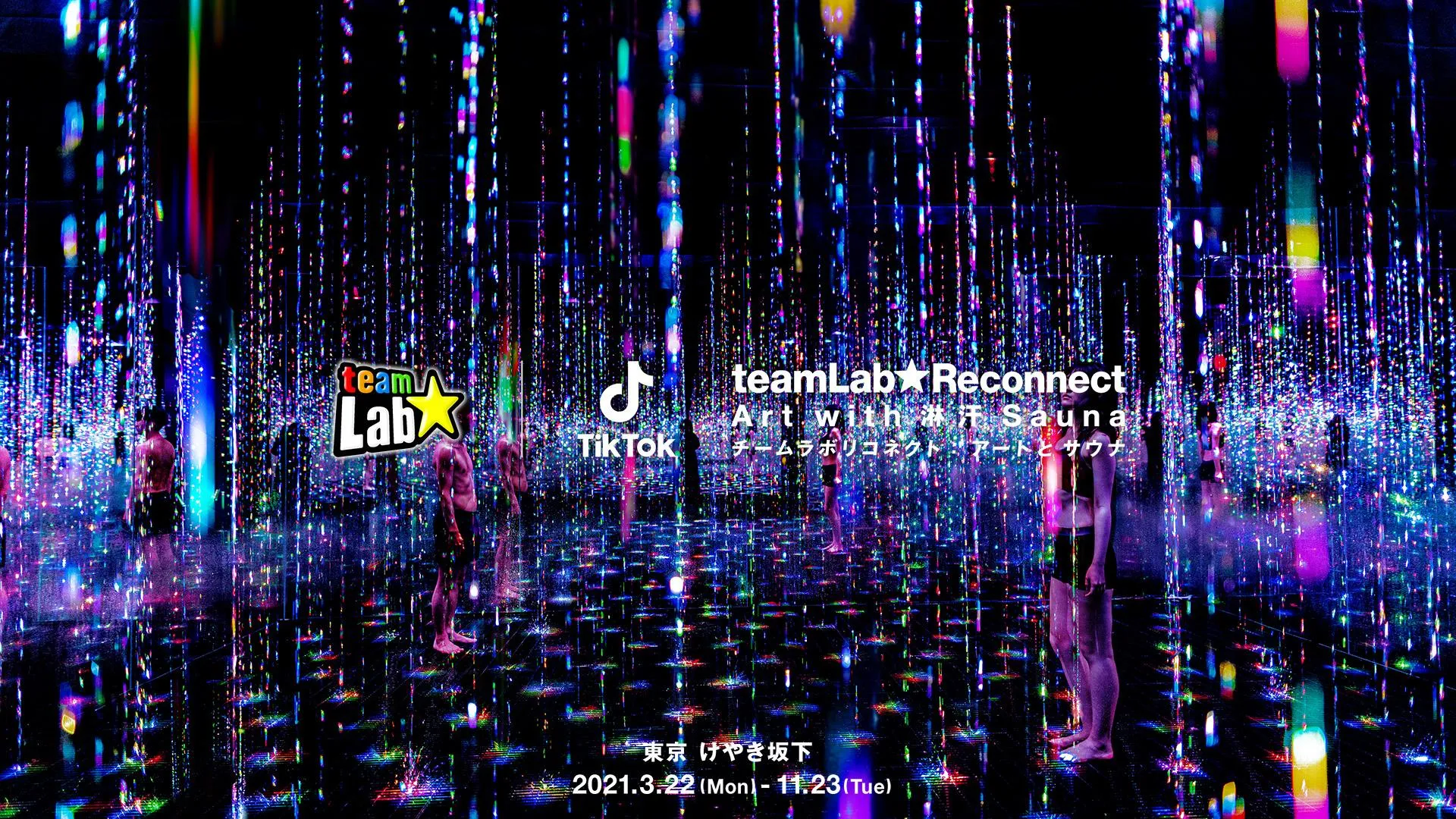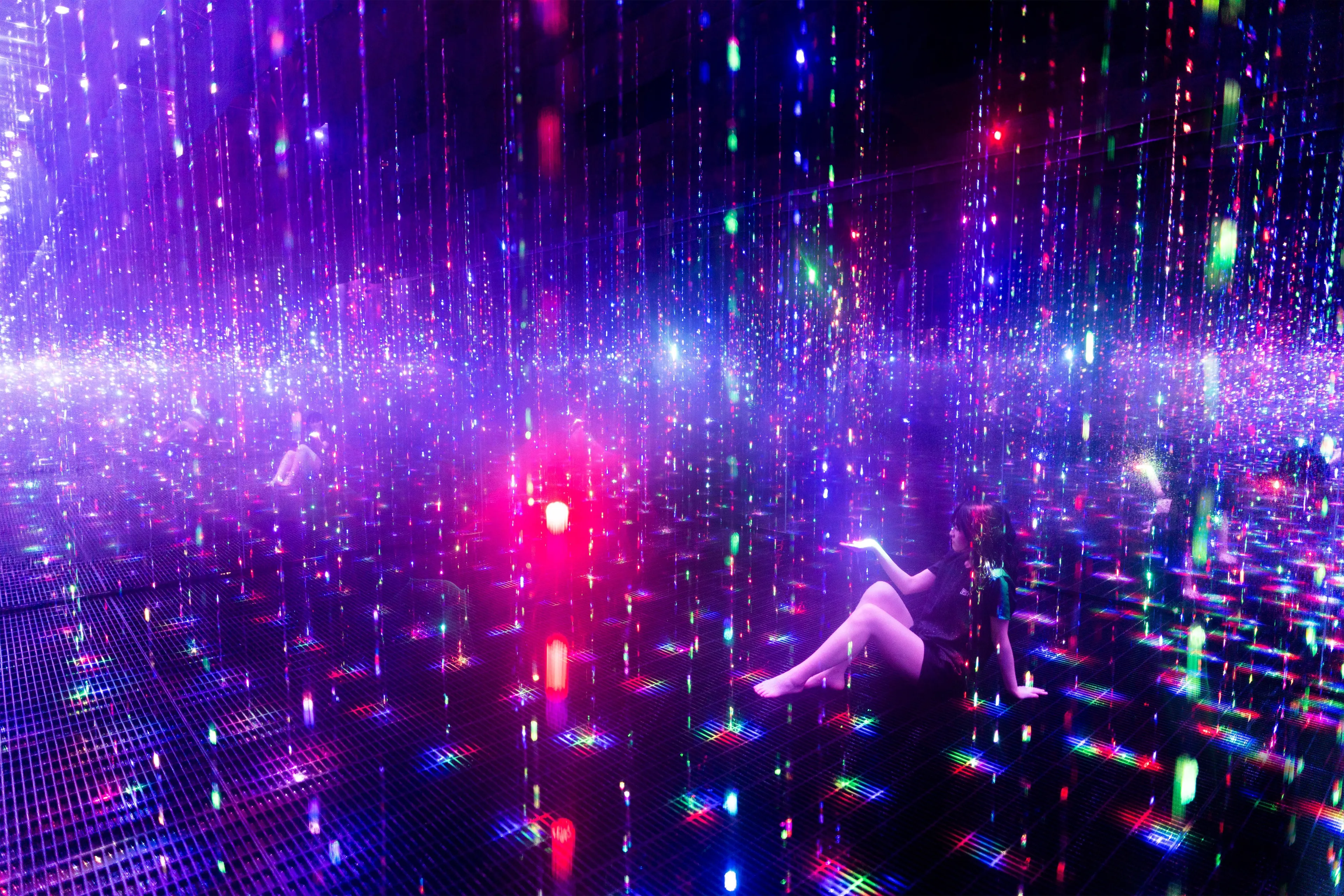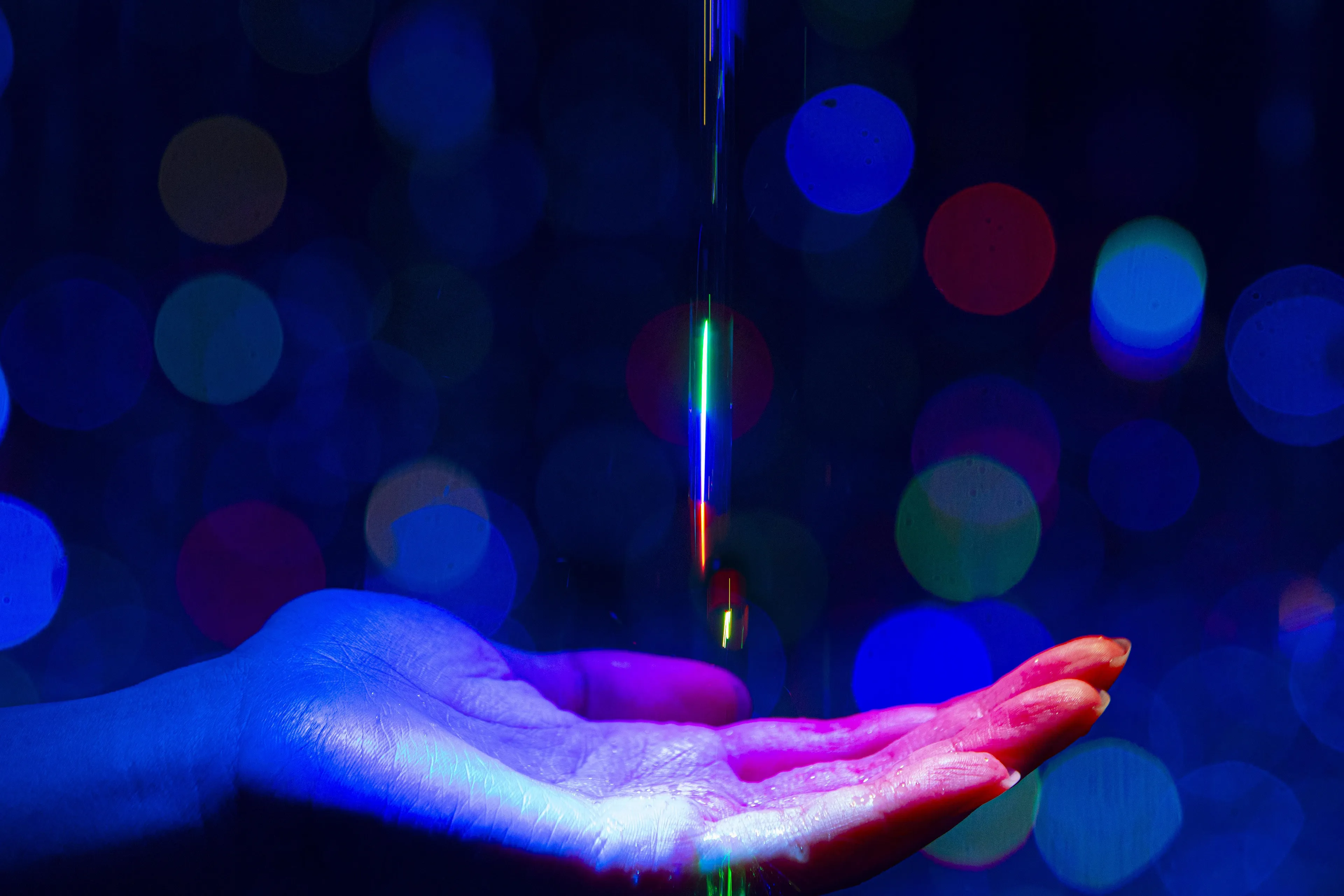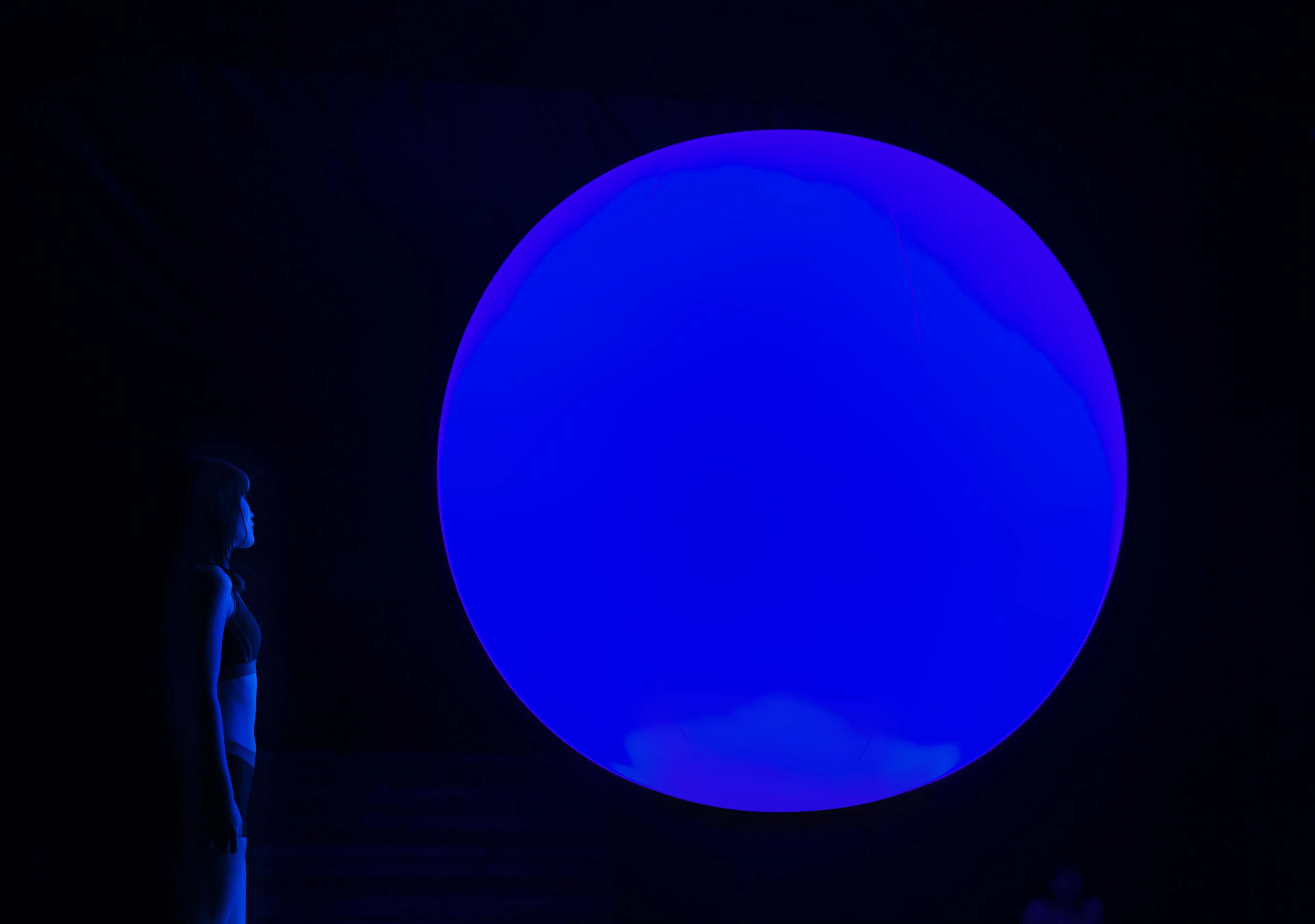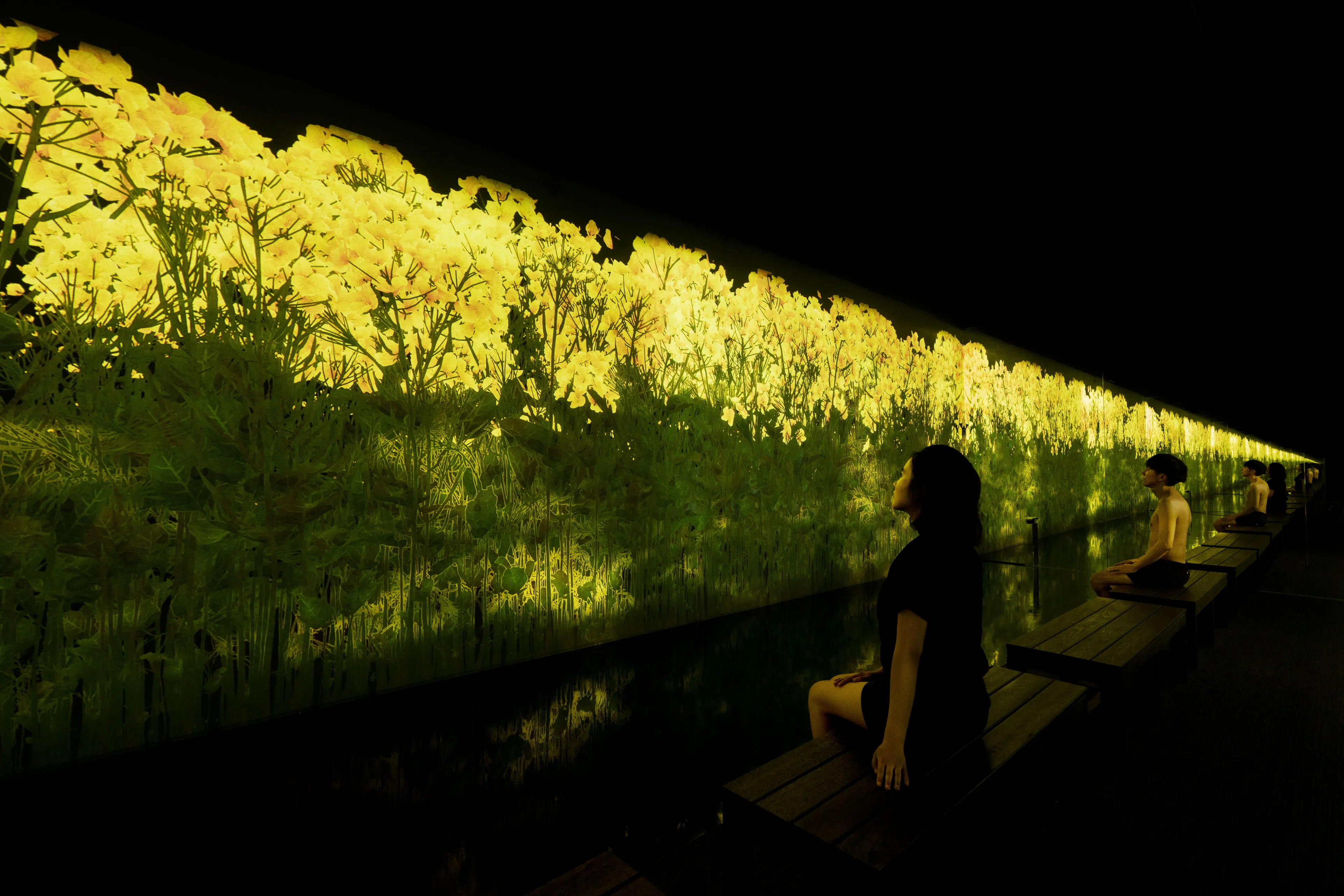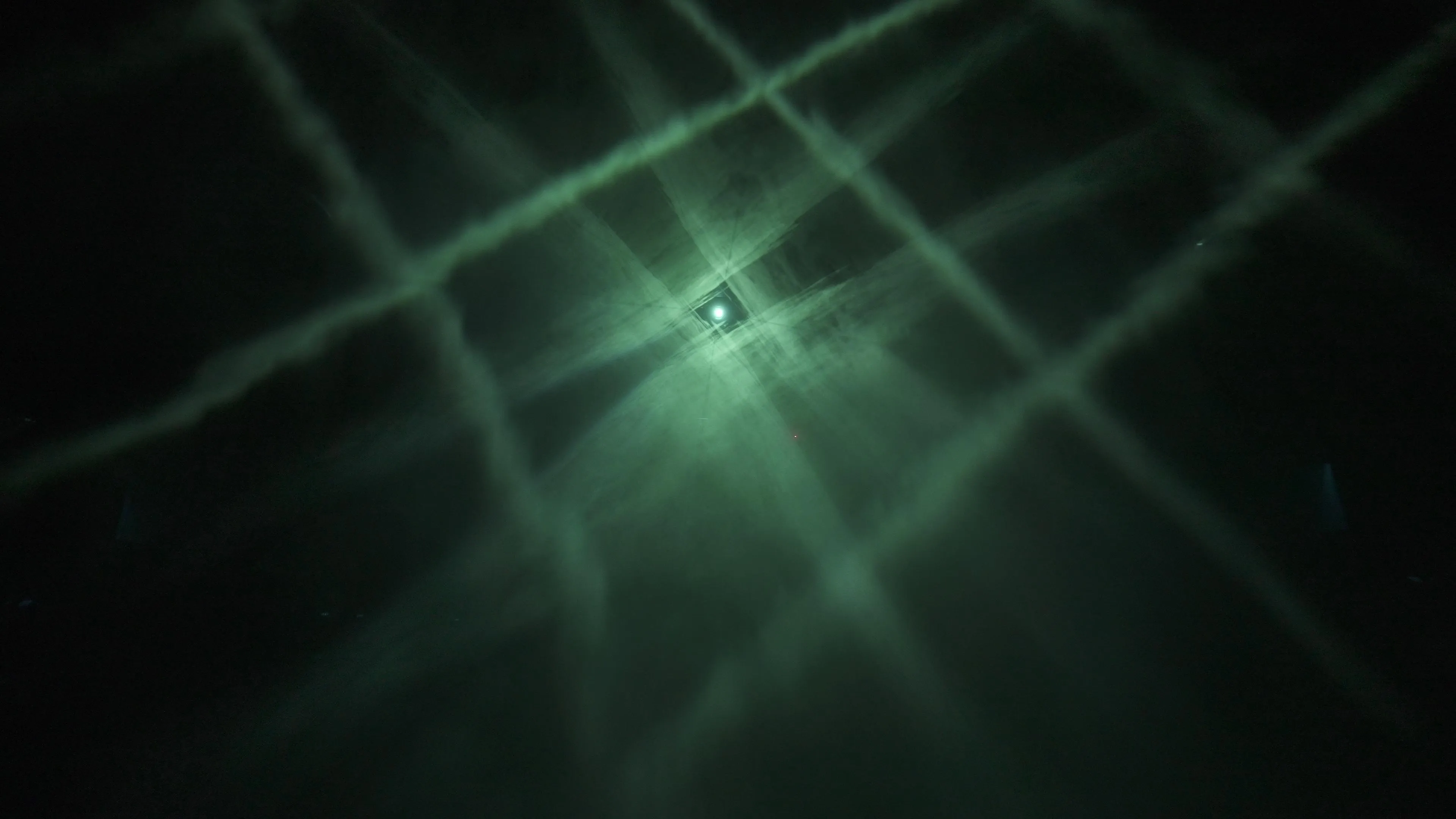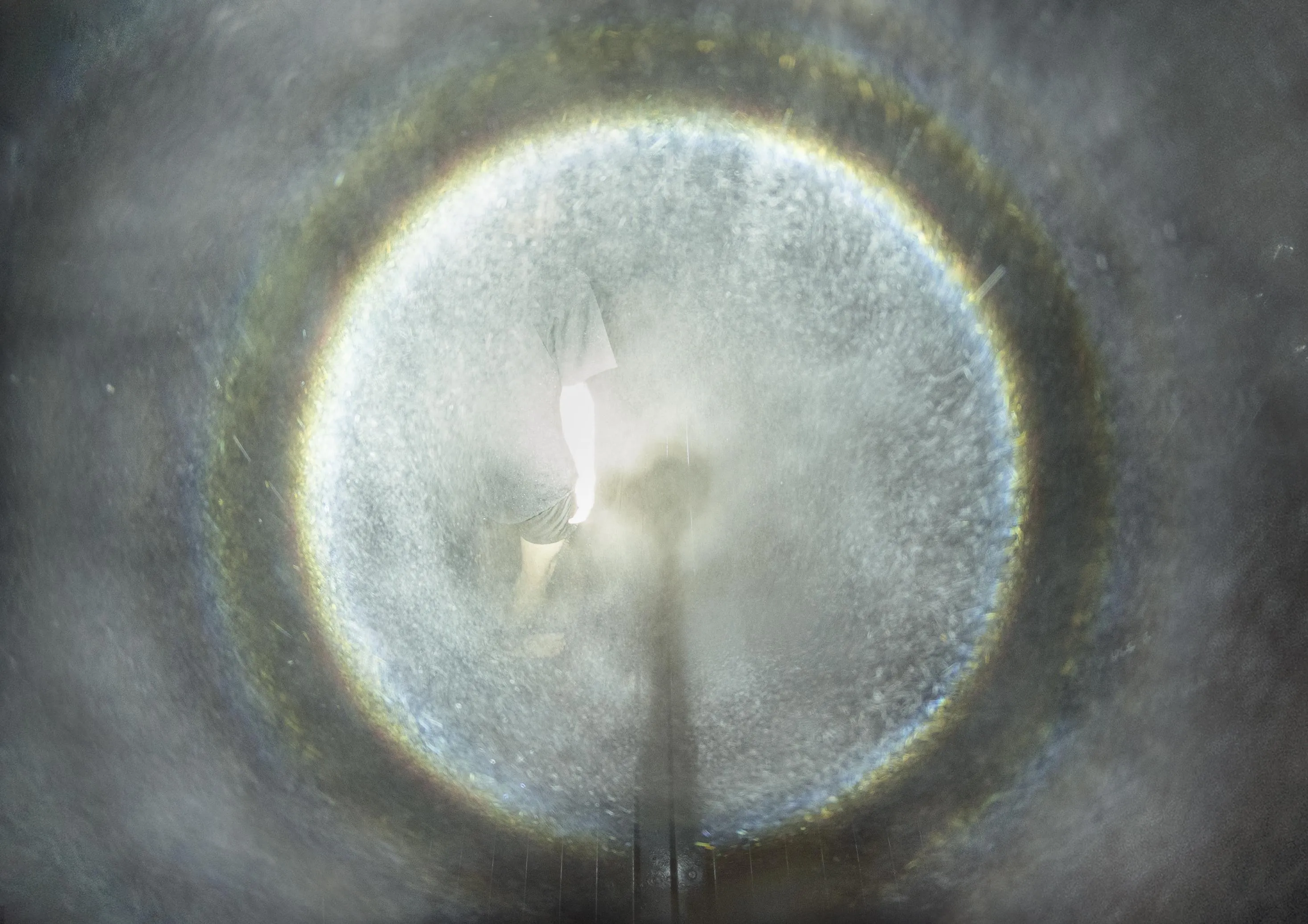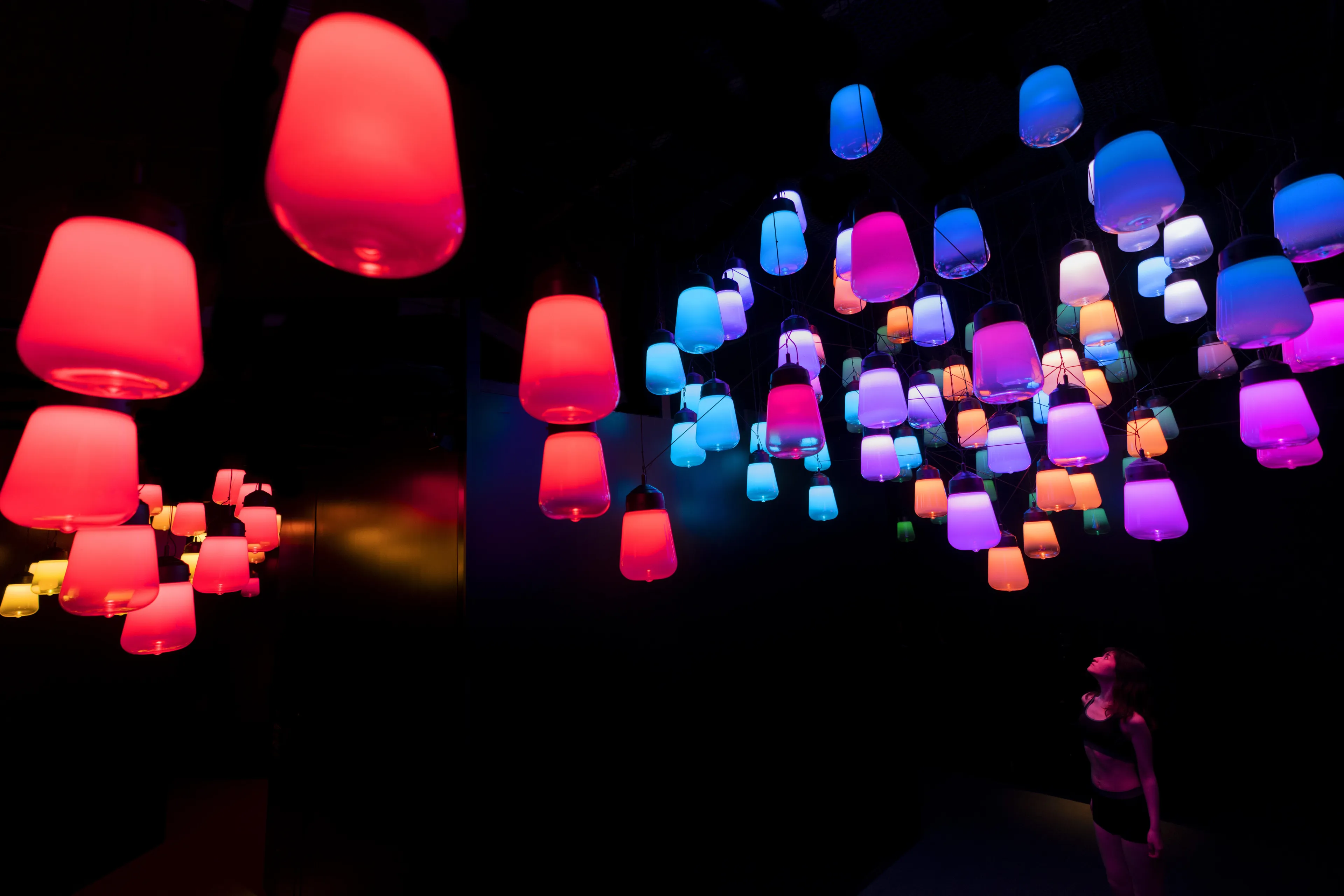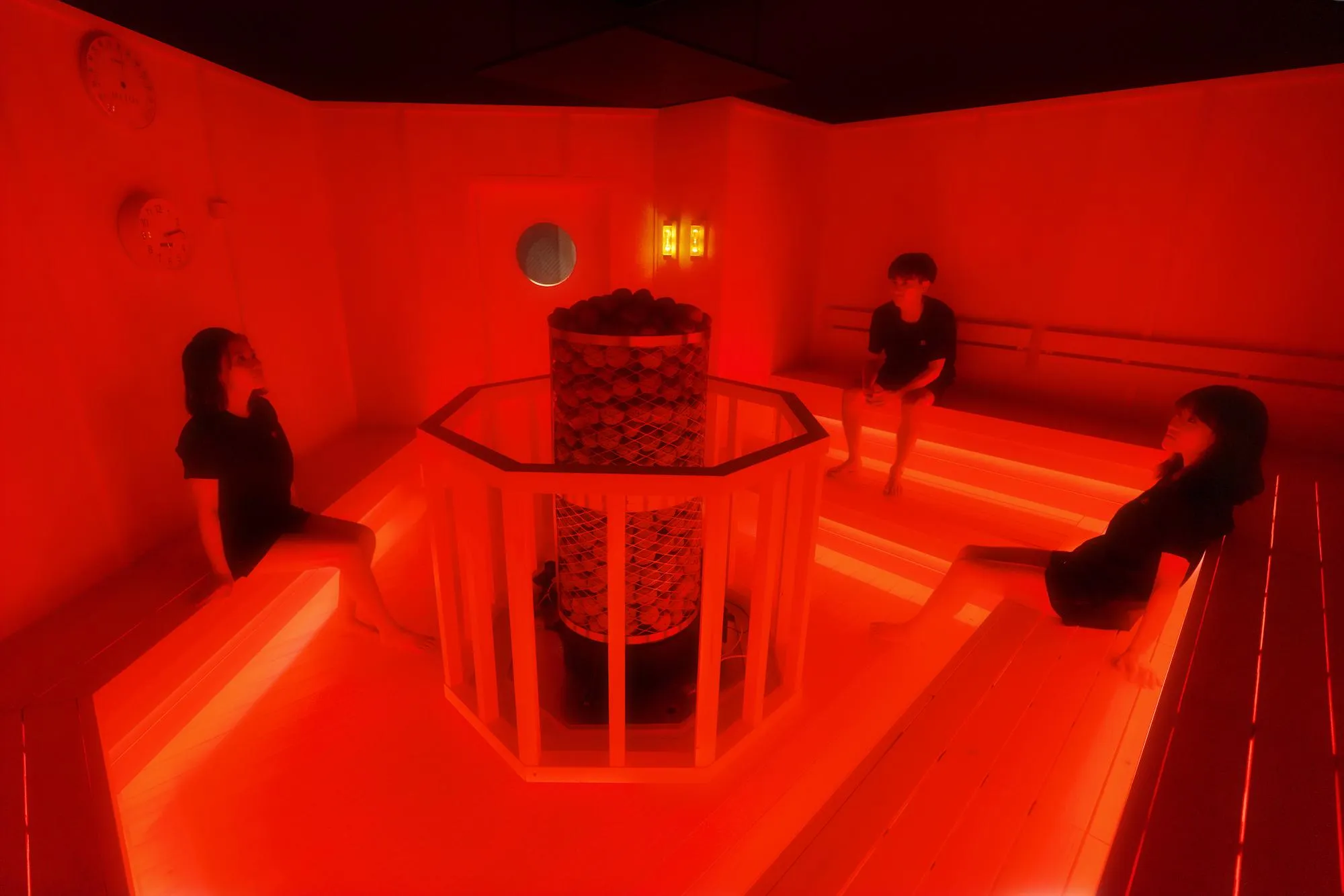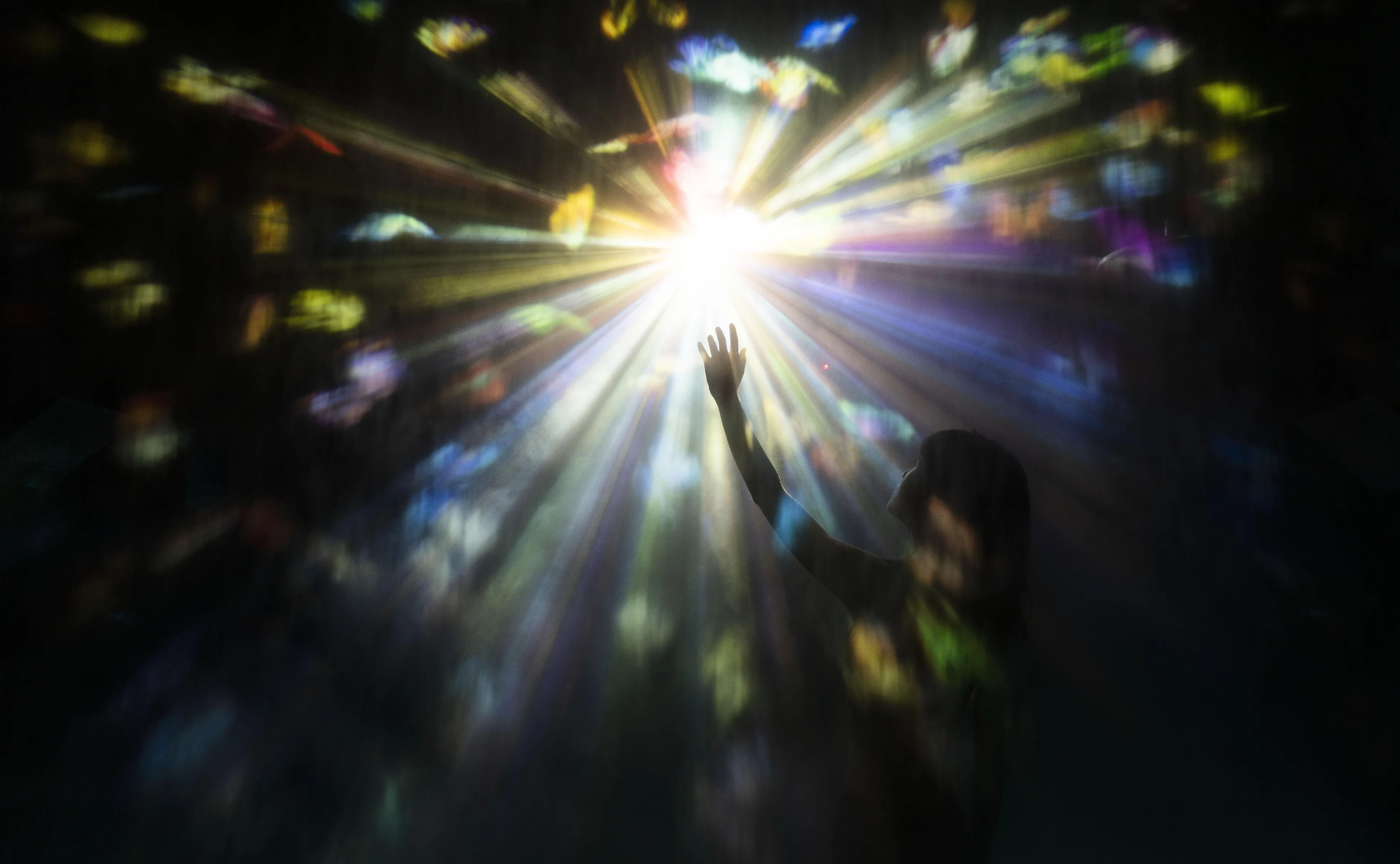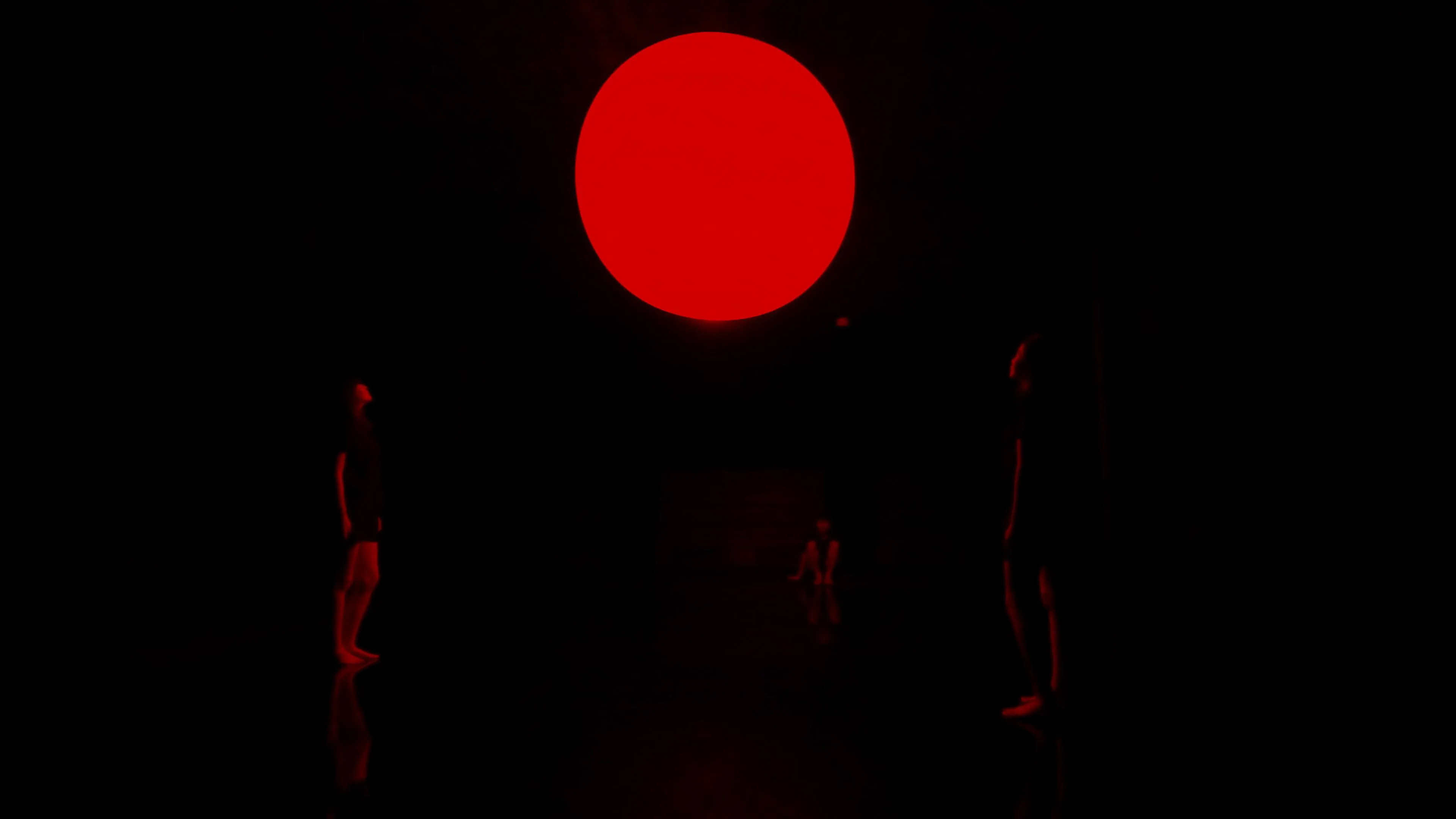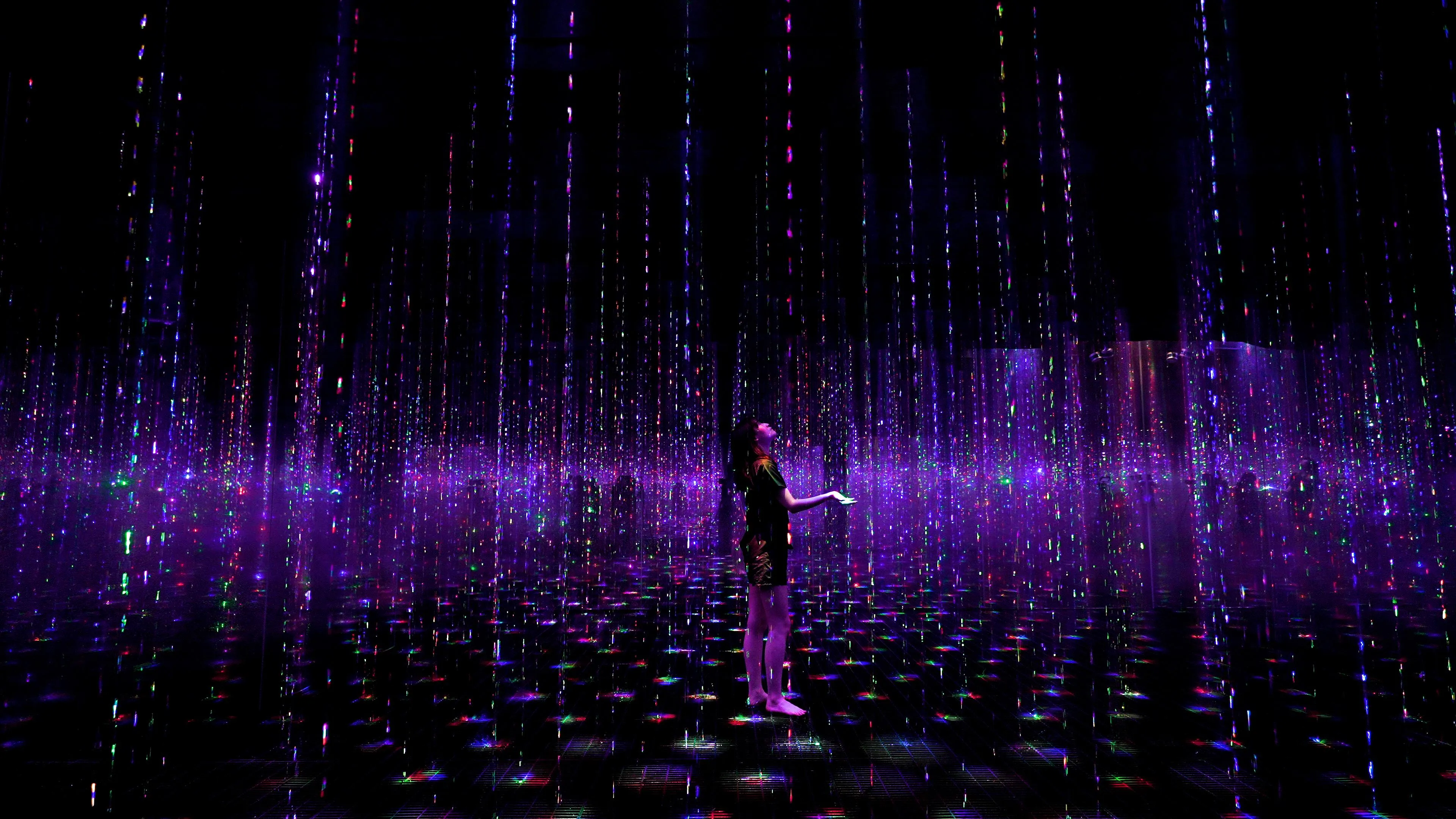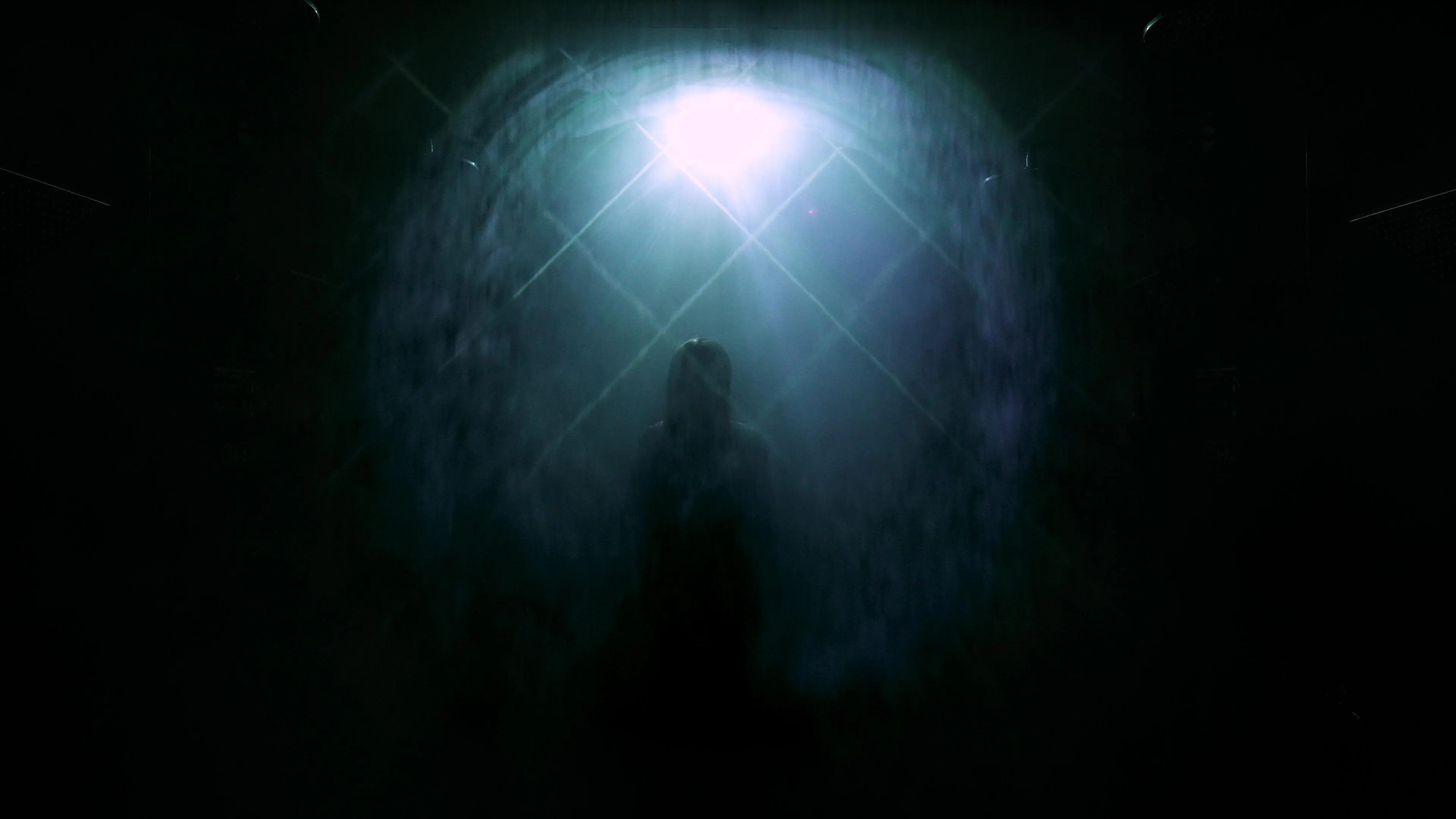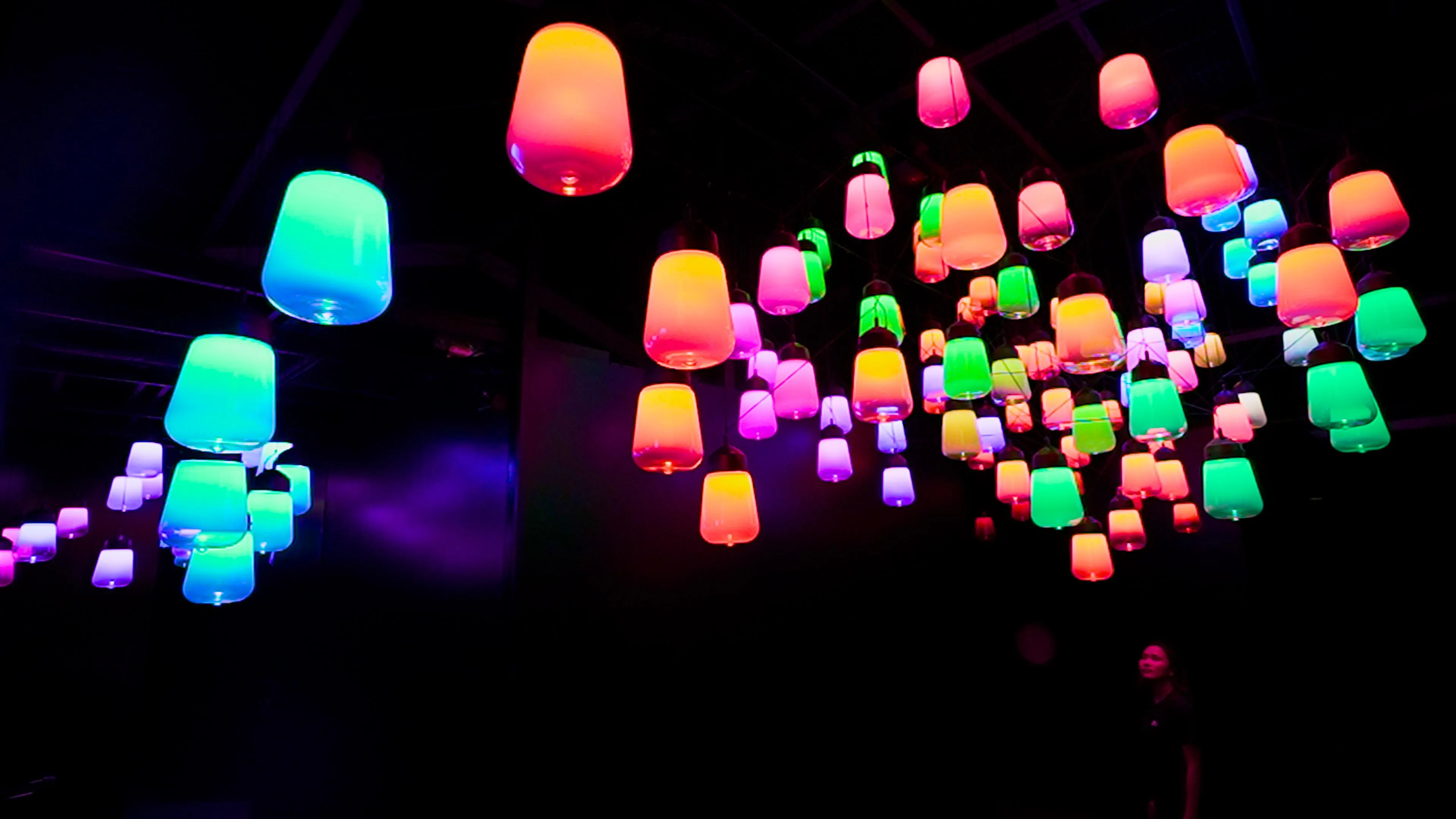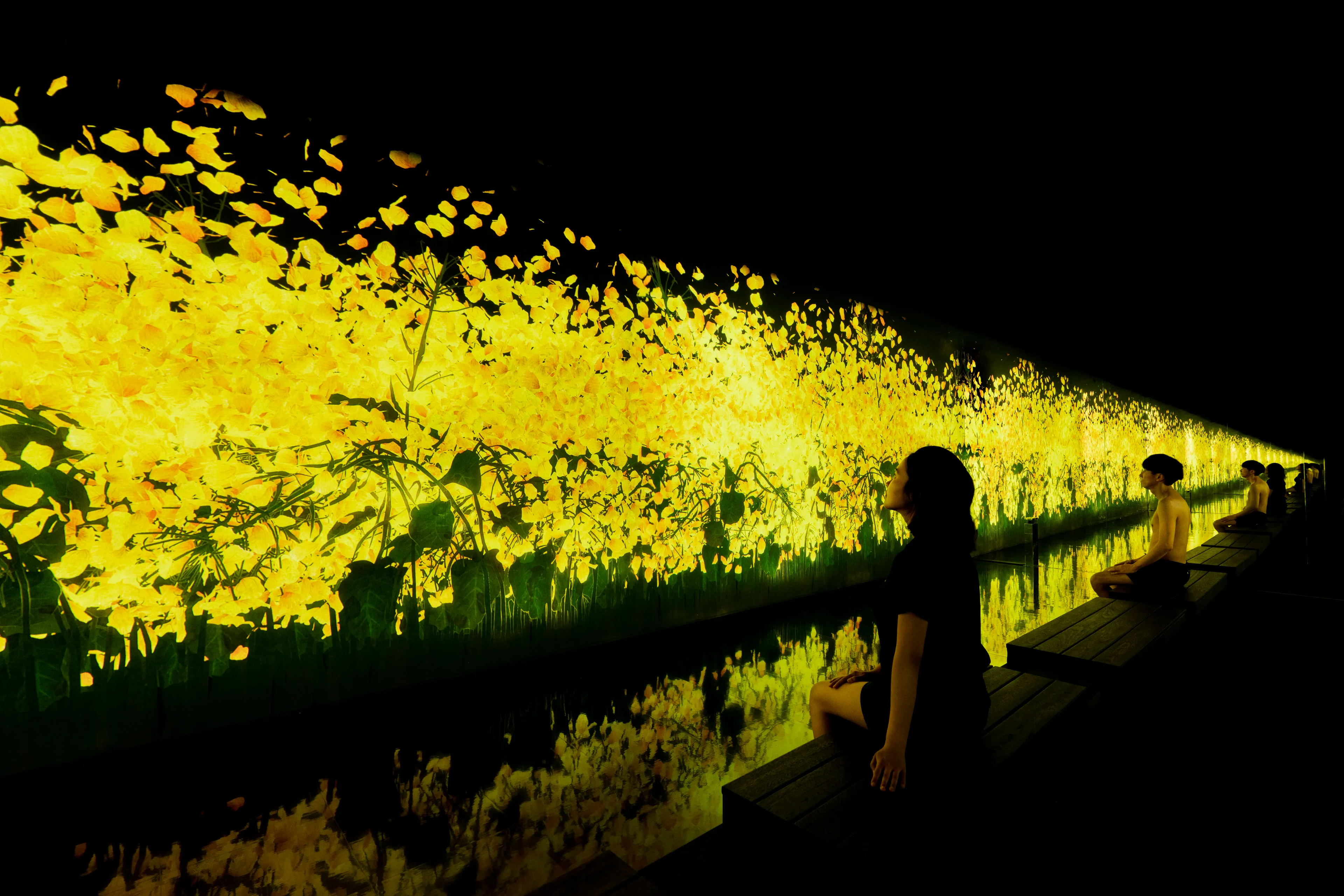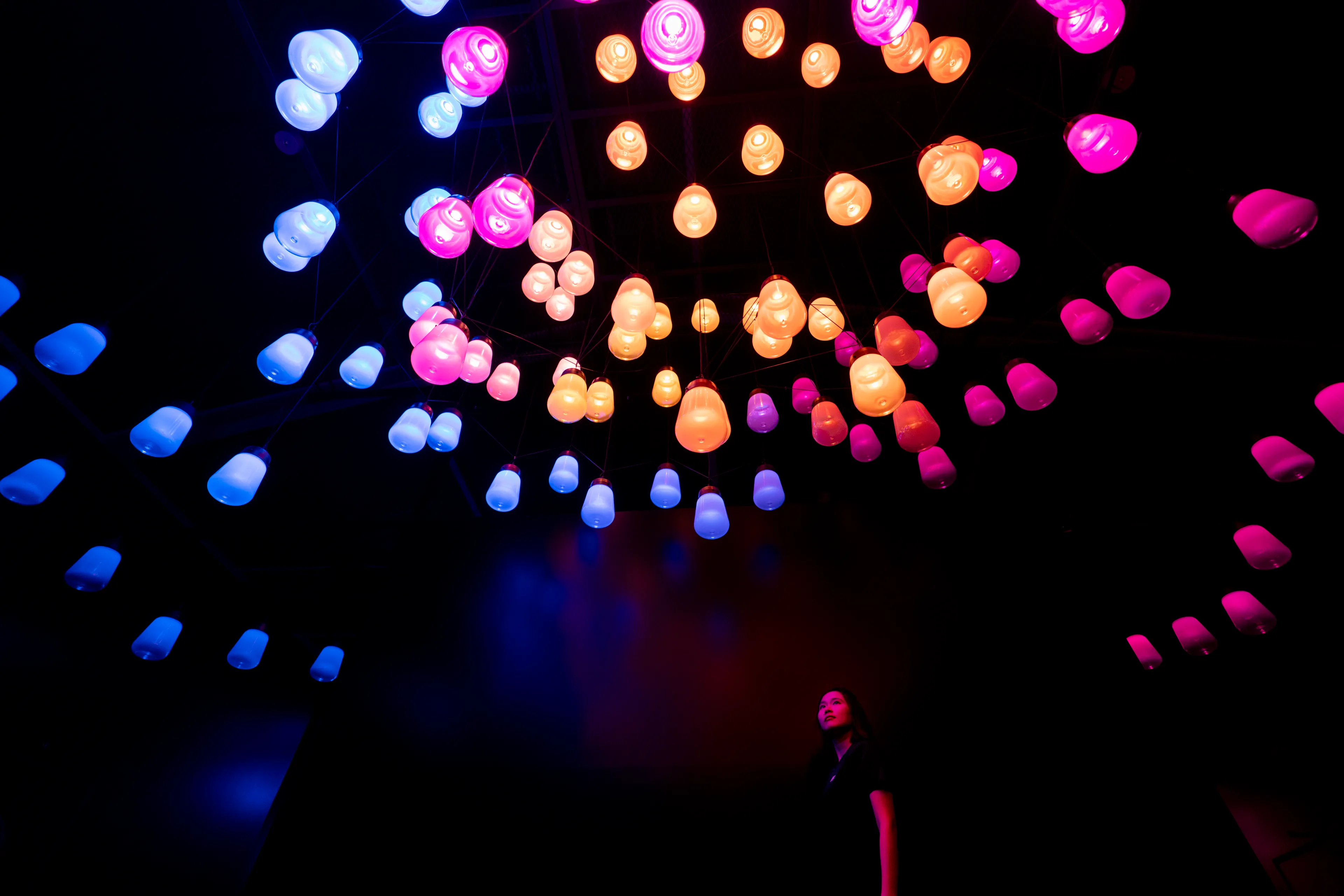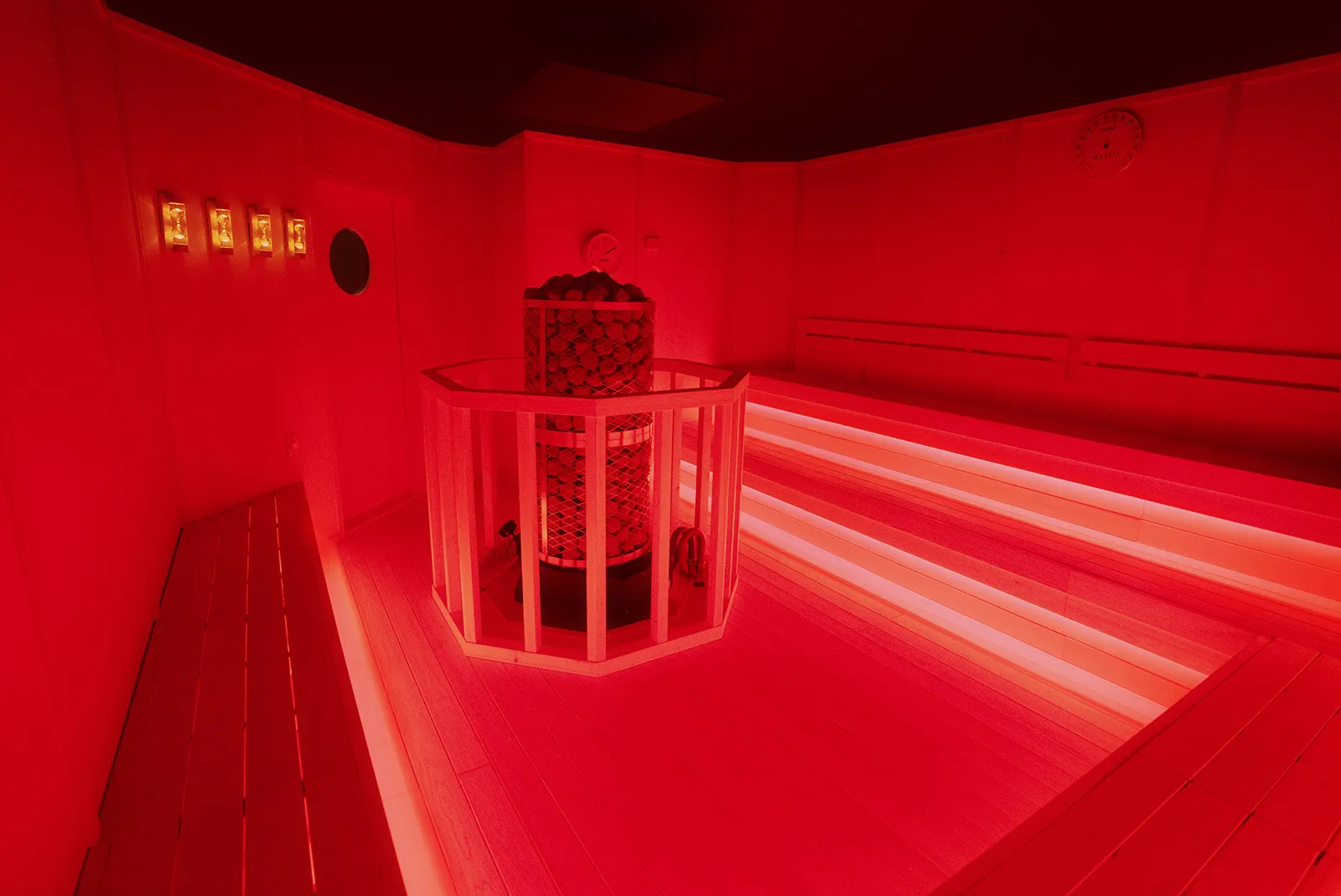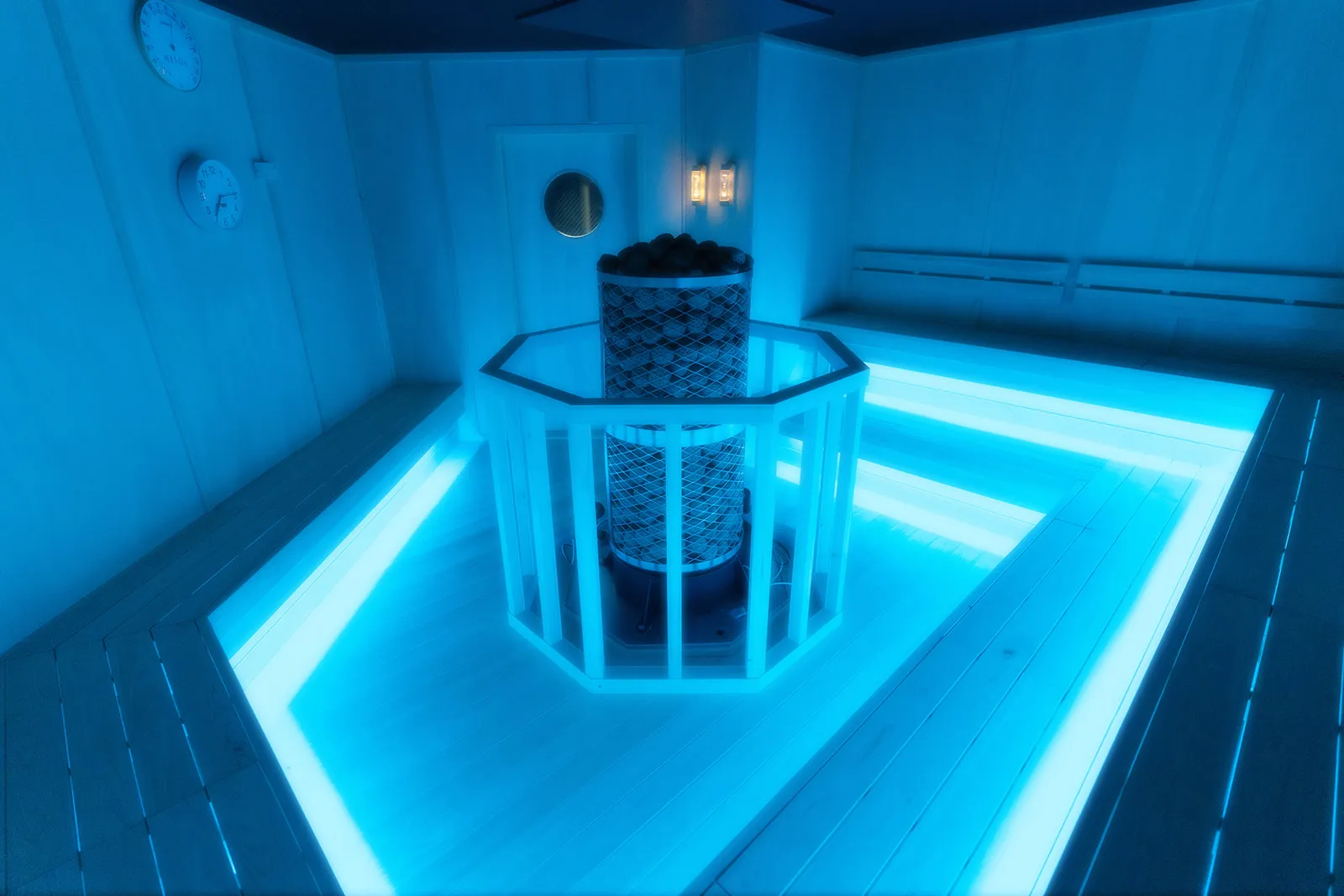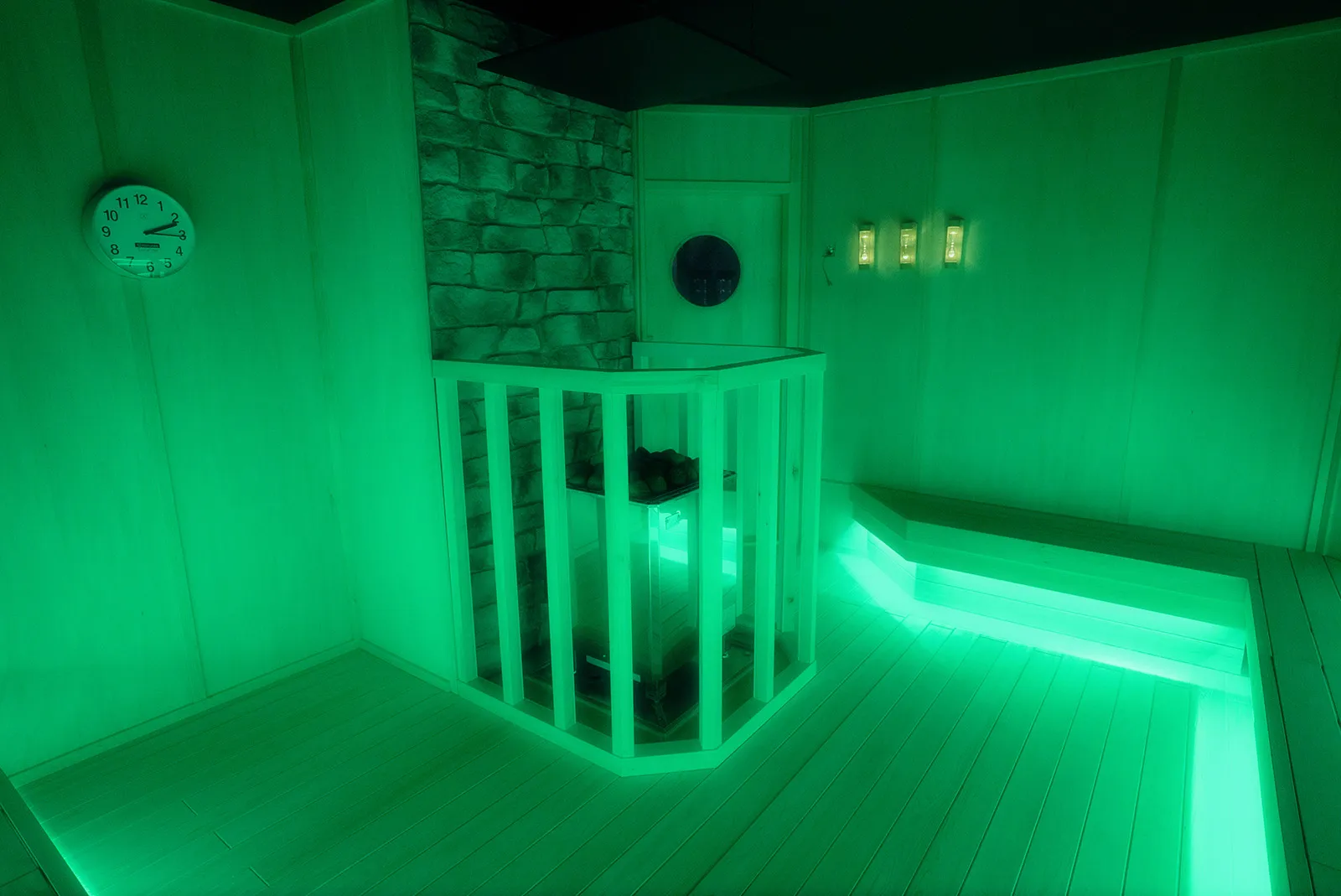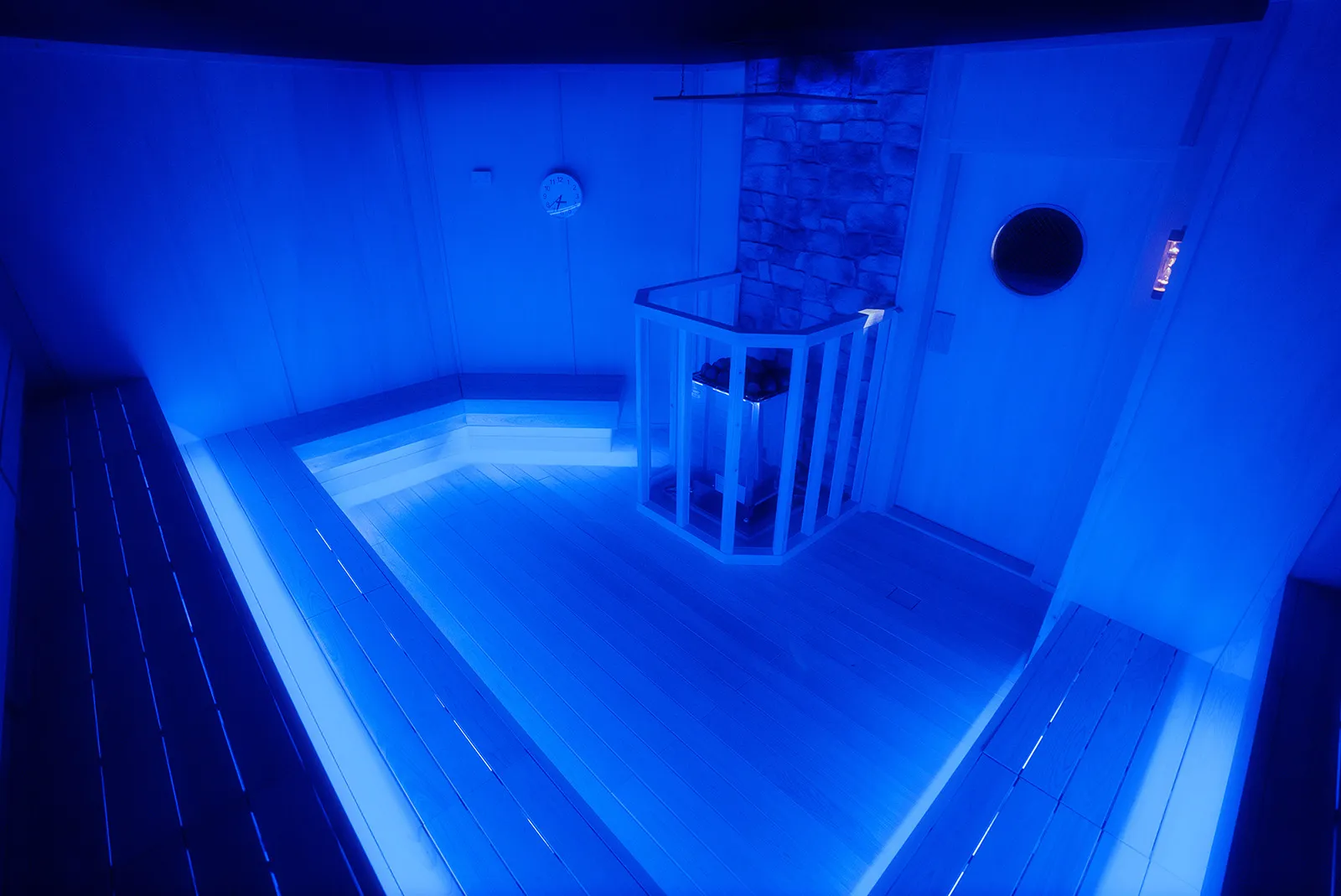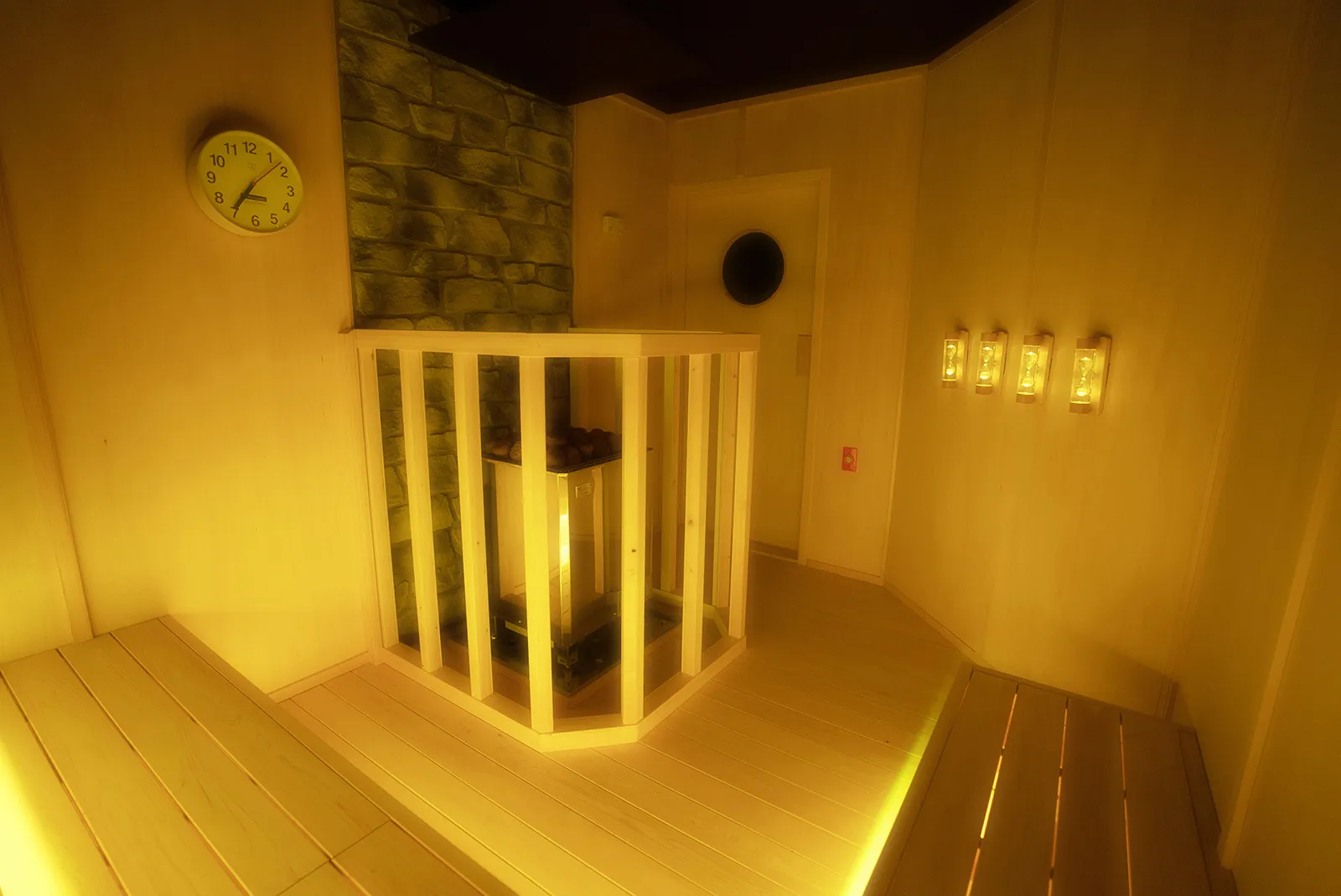BACKGROUND
Sauna Trance from a Medical Perspective
What is Sauna Trance
Sauna trance refers to the pleasant and unusual sensations experienced during the process of enjoying a sauna, cold water bath, and resting immediately afterward.Medically speaking, this is a situation where the sympathetic nervous system is dominant during the sauna and cold water bath, then the parasympathetic nervous system is dominant during the rest period. This can be attributed to the residual effects of adrenaline, noradrenaline, and endorphins released in the bloodstream during the sympathetic nervous system dominance, as well as abnormal increases in oxytocin and serotonin.
What Happens During a Sauna Trance
In order to unravel this phenomenon, the functional changes in the brains of 30 sauna-goers were analyzed before and after their sauna visit using a high-precision electroencephalography (EEG) machine called a Magnetoencephalography (MEG). As a result, an interesting phenomenon was observed. In addition to the normalization of alpha waves, which are associated with relaxation, beta waves, which are often suppressed during relaxation, were activated only in a part of the right parietal lobe. The right parietal lobe is responsible for all of the senses, including spatial and visual perception, physical sensation, and location information. This is consistent with the comments of sauna enthusiasts who related how ideas they hadn’t considered came to mind during their sauna trance, and that they became aware of sounds and smells that they would not normally notice. Furthermore, beta waves were lowered. Since beta waves are inversely proportional to the level of brain arousal, we found that after the sauna, visitors felt more aware and clear-headed.In summary, the sauna will help you relax deeply, increase your creativity, sharpen your senses, and feel clear-headed. It can be described as a state similar to meditation.
No more than three sets of [Sauna + Cold Bath + Rest]
In experiments with the autonomic nervous system, it was found that if more than four sets are done, the once-elevated function of the autonomic nervous system declines, and some people become lightheaded. It is best to adjust gradually while being aware of your body’s responses.Historical Background of Art and Sauna: Rinkan-Chanoyu
In the middle of the Muromachi Period (1336 - 1573), a type of tea ceremony in which tea was served to guests after their baths was called rinkan-chanoyu (rinkan sauna and tea ceremony). Much like with shoin-cha (decorative tea time), paintings, incense burners, vases, and hanging scrolls were displayed in the bathing rooms, and it is said that many spectators came to watch toucha (tea-tasting games) after bathing.
Rinkan-chanoyu was a widely-practiced basara (eccentric hobby) in Japan, particularly at the Kofukuji Temple in Nara.
In those days, a bath was a steam bath, or what we would today call a sauna, in which water is poured over heated sauna stones. People in Japan have long enjoyed the acts of viewing art in a sauna and drinking tea as a cultural pastime.
The term basara refers to the social and cultural trends in the middle ages in Japan, mainly during the early Muromachi Period (the Nanboku-cho Period). It was an aesthetic of meritocracy, one that disregarded the status quo, belittled, ridiculed, and rebelled against the authority of those noble in name alone, and instead favored extravagance, flamboyant behavior, and chic clothing. This storyCulture was also the seed of the later revolutions in the Warring States Period.
It is said that Murata Juko (1422 - 1502), the teacher’s teacher of Sen no Rikyu (1522 - 1591) and the inventor of wabi-cha (tea ceremony), was also enamored with rinkan-chanoyu when he was young. He later studied under the Japanese monk Sosun Ikkyu at Daitokuji Temple, reached a state of chazenichimi (the realization that tea ceremony and Zen are one), and created wabi-cha. Then, the brothers Furuichi Choei and Furuichi Choin, who were main figures of rinkan-chanoyu, became disciples of Murata Juko, and rinkan-chanoyu became wabi-cha.
The Cultural Background of the Modern Sauna Boom: Manga and SNS
Before the sauna boom, the special physical and mental state that was experienced after taking super hot and cold alternating bathing, was implicit. With the spread of social networking services, the verbalization of totonou (sauna trance) and the visualization and spread of the word, process, and methodology of totonou through manga, allowed many people to experience sauna trance, and created a sauna fan base. This has happened over the past ten years, and is probably the reason for the modern sauna boom.
* We would like to express our sincere gratitude to Tanaka Katsuki and Nure zukin-chan for their advice in writing this article.
Inference of Connection of Sauna Trance with Japan's Infrastructure and Cultural: Public Baths and Water Baths
When did the sauna trance method of bathing, which has been implicitly inherited by sauna lovers, begin?
The Japanese steam bath was replaced by the modern bathing in hot water baths in the mid-Edo period (early 17th century). The modern sauna was introduced to Japan from Finland around the time of the 1964 Tokyo Olympics. In Finland, there are many lakes, and in saunas near lakes people do jump into the cold lakes, however, saunas in the city do not always have cold water baths.
So when did saunas in Japan start to always include a water bath? In fact, it is believed that water baths existed in public baths long before saunas. If you were born in the countryside in Japan, you may have been told by your grandfather to "pour cold water over yourself" at the end of a bath.
The story of pouring cold water over yourself after a steam bath appears in the collection of medical essays by the court physician of the late Kamakura period (late 13th century), Tomotoshi Koremune, in his book "Idansho" (one of the oldest essays by a physician in Japan). Since the days of the steam bath, cold water has been poured over the body after a steam bath. This may have something to do with misogi, the ancient Japanese Shinto ritual of purifying oneself by bathing in waterfalls and rivers. Even today, this is done at shrines at its chozu-ya pavilion which contains a large water-filled basin. Since the Nara period (8th century), when public baths were built, people have been pouring cold water over themselves after steaming baths. At the very least, the alms baths created in the Nara period were replaced by hot water and remained in the city as public baths called sento, and the pouring of cold water over oneself was somehow replaced with water baths. The practice of alternating hot and cold baths may have been implicit for more than a thousand years. This may have been the infrastructure and cultural foundation that led to the development of totonou (sauna trance) brought about by alternating super hot and cold baths.
